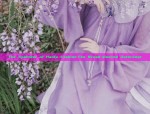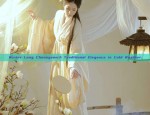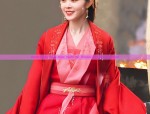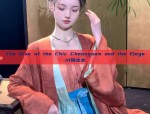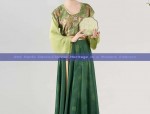Elegance and Diversity in Song Dynasty Womens Hanfu Fashion
The Song Dynasty (960-1279 AD), a pivotal period in Chinese history, witnessed a remarkable evolution in fashion, particularly in the attire of women. Hanfu, the traditional clothing of the Han people, experienced a renaissance during this era, reflecting the cultural richness and societal changes.

Women's attire during the Song Dynasty was a blend of elegance and practicality. The Hanfu fashion during this period was not just about aesthetics but also about status, social norms, and cultural identity.
The color palette of Song Dynasty women's Hanfu was diverse, ranging from the traditional hues of red, green, and black to more subtle shades of gray and brown. These colors were often symbolically significant, reflecting the wearer's rank or marital status.
The design and style of Hanfu during this era were intricate and complex. The use of patterns such as floral motifs, geometric shapes, and dragon and phoenix designs were common. These designs not only enhanced the aesthetic appeal of the clothing but also served as a form of cultural expression.
The materials used in the making of Hanfu were equally important. Silk, cotton, and hemp were the most commonly used materials, with each material having its own unique properties and aesthetic value. The quality of the material often reflected the wearer's social status and wealth.
One of the most distinctive features of Song Dynasty women's Hanfu was the use of accessories. These accessories, ranging from jewelry to scarves and headpieces, not only added to the beauty of the outfit but also served a practical purpose. Many of these accessories were made using precious materials such as jade, gold, and silver, further enhancing the overall look and value of the outfit.
Another noteworthy aspect was the evolution of Hanfu to accommodate changes in societal norms and lifestyles. As women's roles in society began to evolve, their clothing also underwent changes. For instance, there was a trend towards more practical and comfortable designs that could be worn for longer hours without discomfort. This balance between traditional values and practicality is reflected in the design and style of Hanfu during this era.
The Song Dynasty also witnessed the emergence of regional styles in Hanfu. Different regions had their own unique styles and designs, reflecting the influence of local culture and traditions. This diversity in style not only enriched the cultural heritage but also contributed to the overall beauty and uniqueness of Hanfu fashion during this era.
In conclusion, the fashion of Hanfu during the Song Dynasty was a reflection of cultural richness, societal changes, and women's evolving roles. The balance between traditional values and practicality, along with the use of diverse materials, patterns, and accessories, made Hanfu a unique and fascinating aspect of this era. The beauty and diversity of Song Dynasty women's Hanfu continue to inspire and influence modern fashion trends, highlighting its enduring legacy in Chinese culture.
Moreover, studying the fashion trends of Hanfu during this era provides valuable insights into the history and culture of China, highlighting the intricate relationship between fashion and societal norms, as well as the role of clothing in cultural identity and expression.

 Previous Post
Previous Post

